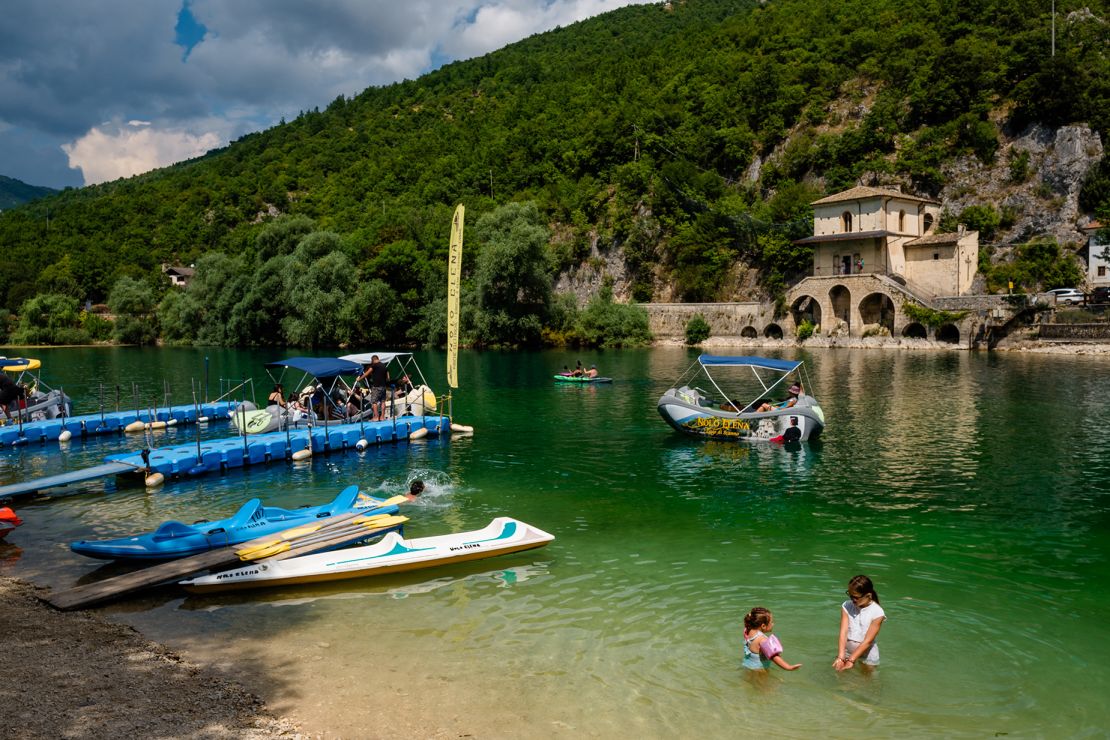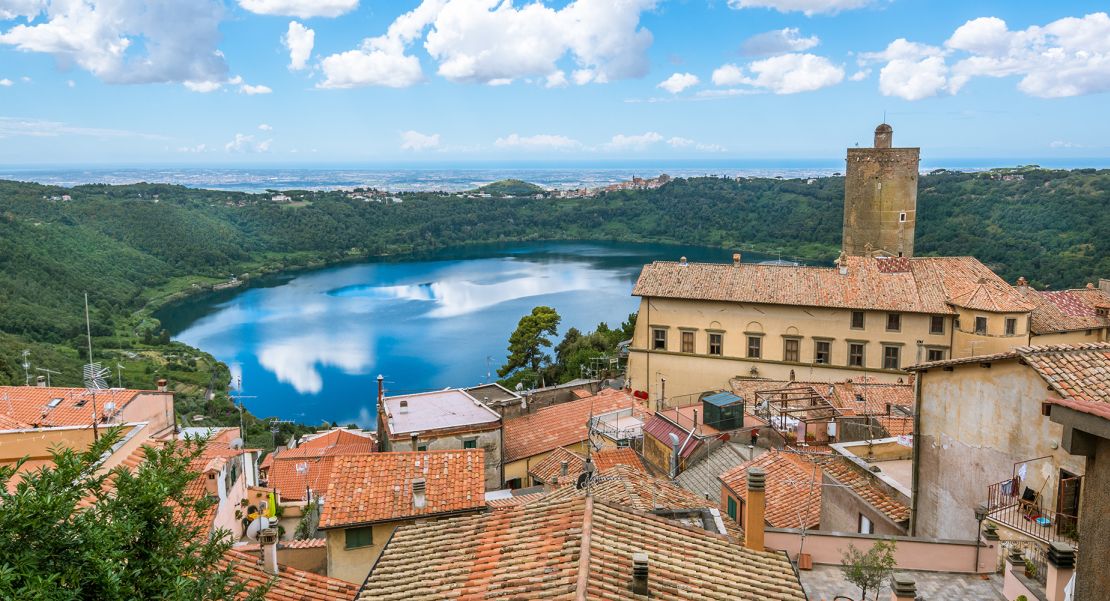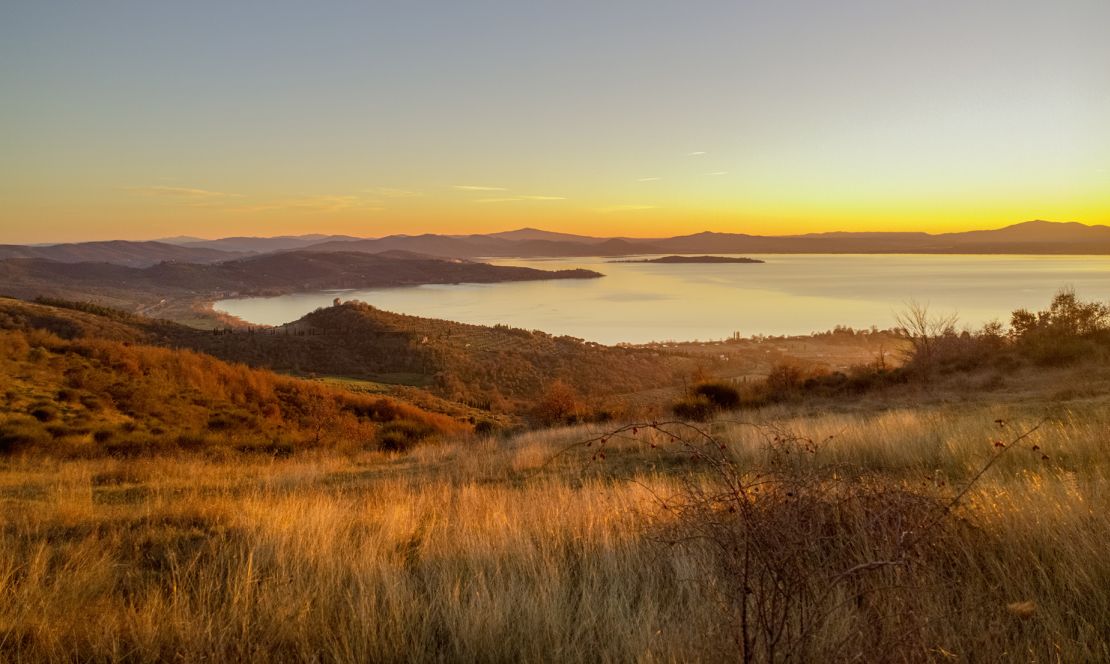Tourists regularly flock to Italy to enjoy its beaches and islands, they admire its historical cities – and of course they enjoy the food.
Recently, they’ve been coming in far greater numbers, leaving some destinations overwhelmed. However, there are still places to visit that offer an escape from the crowds as well as stunning scenery.
We’re talking lakes. But not Lake Garda, the huge body of water that nestles up against the Alps, busy with resort towns. And not celebrity-favorite Lake Como.
Italy has dozens of secret smaller lakes that boast superb scenery, unknown to mass tourism, where locals get together on day trips and enjoy picnics.
These are some of the best:
Lake Turano
One of the best-kept secrets of Lazio, the region around Rome, is Lake Turano. Visitors to Rome, many who wilt during the heat of the Eternal City’s fiery summers, have no idea that nearby lies an enchanted place that has the views, the history, the food and a welcome breath of fresh air.
It wasn’t meant to be a vacation spot at first. When Benito Mussolini, Italy’s former dictator, ordered the construction of this artificial lake in the 1930s to supply water to nearby power plants, the last thing he expected was for it to turn into a weekend detox retreat for people longing for open spaces.
Lago del Turano has an ideal location, close to the capital but far from the noise and chaos.
Set in the wild countryside north of Rome and surrounded by hills, the location was once home to the Fallisci, an ancient tribe, before they were wiped out by ancient Romans.
Free-roaming cows and sheep greet visitors along a road cut through a deep forest that leads to the lake. Once out of the woods, the mesmerizing scenery of the lake forces drivers to stop at a belvedere with benches to take in the view.
The lake brims with giant carp that draw anglers from across Italy for fishing contests.
Two picturesque towns of stone dwellings with panoramic balconies overlook lake Turano - the clifftop medieval Castel di Tora and the even more ancient Colle di Tora, sit right on the shoreline. There’s also a tall peninsula jutting out into the lake topped with an old monastery.
The water is crystal-clear and the pebble shores are dotted with beach facilities where one can rent dinghies, canoes, boats, or simply suntan and sunbathe in tropical-like waters.
Just one metal bridge runs over the water connecting Castel di Tora to the main road. In winter, most holiday homes are shut and the narrow alleys are largely deserted apart from cats. In spring, locals spruce up their outdoor patios and socialize in the little piazza.
Fresh fish is served at restaurant L’Angoletto, a stone cottage with an open panoramic veranda over the lake. Hotel Turano has cozy, no-frills lakefront rooms and a restaurant serving local specialties.
Lake Scanno

The most intriguing of all lakes however is Lake Scanno, the “pearl” of eastern Italy’s Abruzzo region, which is as beautiful as it is mysterious.
Over the years, tales and myths have been spun about this deep green, heart-shaped lake that persist today, attracting scientists and paranormal investigators who try to find explanations to weird happenings that have long baffled locals.
Surrounded by the Apennines mountain range, it is said this natural lake, named after the overhanging village above, has magical powers.
Locals believe the lake is alive and some have previously reported unusual phenomena such as shattering light bulbs, exploding TV screens and ceiling lamps dancing as if a small earthquake had just struck.
They also tell stories of other unexplained events: sudden water level drops, divers compasses going berserk and dead fish and even long-lost World War II weapons floating on the surface. There’s said to be a mysterious unidentified object buried in the lake bed.
Lake Scanno’s unusual atmosphere is almost palpable. In the heady days of summer, the sense of mystery hangs in the warm air.
Despite its green color, caused by harmless algae in the water, bathing is permitted here as is windsurfing. The lake is also ripe for exploration, with a “Path of the Heart” trail that circles its banks and takes in a church, said to be a site of miracles, and an old hermitage.
Along the shores there is a beach kitted out for summer bathing. There are mountain bike trails and it’s possible to rent rickshaws, rowing boats and canoes.Other facilities include a children’s playground, and a parking area for campers.
Lakefront Agriturismo Miralago is a farm and B&B, where horses roam free. It serves traditional dishes like tagliatelle with wild boar. The village of Scanno, a puzzle of lavish bourgeois mansions and humble shepherd dwellings decorated with bright flower pots, is a must-see.
Lake Iseo
Located just a few miles from Milan, this picturesque spot formed from pure Alpine glacial meltwater is also a source of great sparkling wines, made from grapes grown on its banks.
The lake has three islands. The two smallest are private while the largest, Montisola, a huge mountain sticking out of the deep blue water, is heaven for nature-lovers.
Here, visitors can rent canoes or fishing boats for a private tour of the lake. Another shoreside attraction is the brightly colored dwellings built for fishermen that stand on stilts over the edge of the water, among them restaurant Locanda al Lago, known for its fish dishes and the sardines hung on the dock to dry. Hotel Sensole is a lakefront Baroque palazzo that contains a gourmet bistrot.
Lake Nemi

This small lake just beyond the southwestern suburbs of Rome is where locals flock for Sunday lunches with traditional porchetta pork sandwiches and heady red wines.
They’re treading in the footsteps of their ancient predecessors. Back in the days of Roman empire, senators and wealthy families came here to relax in lavish retreats around Nemi’s shores, where succulent strawberries grow amid archeological ruins and dense forests.
Sited among the Colli Albani hills on the edge of Rome, the lake is of volcanic origin and sits in an extinct crater. It’s accessible by foot along an old route that winds down from a village on the slopes above it that shares the lake’s name.
Lakefront B&B Lago di Nemi is an old restyled farmhouse that rents out bicycles, while restaurant La Fiocina on the shore, serves fish specialties like fried whitebait with green peppers.
Lake Orta
Orta is one of the secret gems of Italy’s Piedmont region, usually overlooked by visitors who flock to the more touristy Lago Maggiore nearby.
Created by a melting Alpine glacier, it’s a quiet idyll with picturesque villages, chapels and medieval towers along its banks. In the middle of Orta, the monastery-island of San Giulio rises from the water.
Alongside myriad biking and horseback riding trails, it’s possible to waterski and even scuba dive in the translucent waters that lie off its pebble beaches. L’Approdo is a four-star lakefront hotel restaurant with a panoramic terrace and pool.
Lake Trasimeno

This shallow lake formed millennia ago by tectonic movements of the Earth’s crust is located in a less touristy part of Umbria, where just locals have holiday homes and shops in the overhanging village of Castiglione don’t sell the usual souvenirs.
Trasimeno’s banks are dotted with medieval hamlets and wooden bridges that cross over the water that are great for birdwatching and sunset drinks.
Beaches here rent out windsurf and kite equipment.
B&B Dolce Dormire has cozy rooms in the ancient district of Castiglione, while La Casa di Campagna is a rural farm and tavern serving local specialties.











